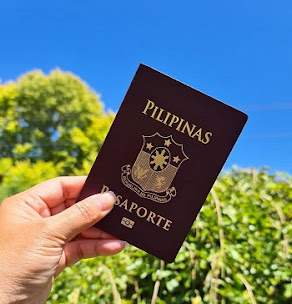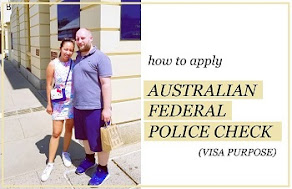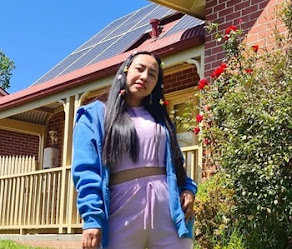Vintage Chanel handbags and accessories.
As luxury brands become more ubiquitous, the fashion savvy are looking for items that are one of a kind. While some niche artisanal labels fit the bill, discerning shoppers are getting their luxury fix via the vintage world.
"I've been hearing the same complaints from women everywhere. They are looking for something different to wear that's not in the stores or available on the internet. No one wants to walk into a party and see someone else wearing the same item," says Lucia Tait Tolani, owner of newly launched members-only styling service Pair.
"Vintage is the perfect solution because so many of the pieces have that rarity and feeling of exclusiveness. It's about finding something that's individual, which is what modern luxury stands for," she says.
While the vintage market has thrived in the West, Hong Kong has been slow to catch on; just a few small boutiques such as Select 18 carry a limited selection of non-branded and occasional branded vintage goods.
Initially, many Asian women avoided buying vintage or previously worn products, due to cultural stigma (wearing used items is viewed as bad luck). Times, however, are changing. Customers are becoming more open to buying vintage, especially as the younger generation come to the fore.
"The Chinese customer is only just starting to define their own fashion culture, which is why the age of the consumer plays into this growth in Asia. They understand the item may be pre-owned, but can still be barely used. They see the quality is very comparable to an item that is branded," says Seth Weisser, founder of New York vintage boutique What Goes Around Comes Around.
Lane Crawford collaborated with What Goes Around Comes Around on a range of vintage accessories
"The key difference [for them] is that many of the styles are not available through the brands any more, making them unique. A key driver in the vintage market is this idea of uniqueness as opposed to buying a branded product that has more of a mass nature."
Weisser opened his first store in New York's Soho neighbourhood in the 1990s, and it quickly became popular with Japanese. Seven years ago he started to specialise in branded luxury goods and attracted more clients from the Asia-Pacific region.
About two years ago Lane Crawford invited Weisser to curate a collection featuring mainly accessories from established designer brands such as Chanel and Hermès. It proved to be so popular that he was invited back again last month.
"Unbranded vintage items connect with a different customer. In Hong Kong and China branded vintage items are on fire, such as Gucci or even Goyard. Customers know the brand already and if they see a product that appeals to them there is no preconceived barrier as opposed to something that has no brand," says Weisser.
While many experts disagree on how old an item needs to be in order to qualify as vintage, rarity is an essential factor in driving sales. Take for example, Chanel's gold-plated jewellery collection, which was produced between 1985 to 2000. While it may not date as far back as other vintage branded items, the fact it is no longer in production makes it much more covetable to Asian audiences. Accessories are flying off the shelves in Asia, so much so that Thomas Tse decided to open The Vintage Concept on Lyndhurst Terrace specialising in vintage watches.
"Clothing is usually designed in a vintage style whereas accessories and watches are actual pieces through time filled with history. A lot of people buy them not only because they look good, but knowing [the watch] has a story behind it.
"A vintage watch can be a better investment than a new model, which is so expensive nowadays," says Tse, who says that Rolexes are still a number one choice for his customers.
"With accessories, we have a lot fewer barriers. We don't have size restrictions, one size fits all," adds Weisser.
That said, vintage clothing is gaining popularity in the region, especially reworked items. Take London-based One Vintage Designs, which recently hosted a trunk show in the city.
It was founded by former retailer Marcelle Symons in 2004. An avid collector of rare textiles, Symons started customising blouses with vintage appliques that she would then sell in her boutiques. As demand grew she branched into other items such as dresses, which continue to sell out on netaporter.com
"The exclusivity aspect really appeals to people - each piece is a one-off and it gets attention. We don't use your usual fabrics - silhouettes are modern but there are unusual details or embroideries that I've sourced everywhere from trade fairs to estate sales. That there is only one of each item available is an attractive proposition for luxury buyers," says Symons.
Rather than work by season, Symons gets inspiration from her own collection of vintage textiles, which she reworks into modern pieces. Recent creations include a chic strapless cocktail dress made from an embroidered '40s kimono decorated with a gold embroidered peacock. A piece of white crochet from the '60s has been transformed into an off-the-shoulder dress that wouldn't look out of place in Saint-Tropez.
"This is where I try to break the barrier. My family, for example, find it difficult to buy vintage off the racks, but this way makes it more accessible. The silhouettes can suit anyone and are more contemporary than just buying a straight vintage piece," she says.
Vintage clothing will only continue to grow in popularity in Asia as customers become more educated.
"Now that people are used to collecting Birkins, Chanels and Rolexes, they understand there is a collectability of things of other times. The more access to vintage we have here, the more that search for something unique will become part of what is luxury is. Vintage will be about owning something that is a step up," says Tait Tolani.
Tips for first-time buyers
Know what suits you. Choose items you love or that look good on you, regardless of age or brand. If it doesn't fit your personal style you won't wear it.
Do your research. There is plenty of information available on the internet, but keep in mind that many factors can affect the value of a vintage piece, from rarity and market trends to condition and provenance.
Choose a reputable dealer. As with buying branded goods authenticity is integral. Avoid shopping online, which is rife with fakes. A specialist can also help you procure a specific item.
Invest in classics. In the vintage world there are core staples that will always keep their value, such as an iconic Chanel blazer or pair of vintage 501 jeans.
Treat your items with TLC. Never dry clean vintage clothes and stay away from knits, which tend to absorb smells.
Watches should be stored in their original boxes and bags in their cloth dustbags.




























Post a Comment